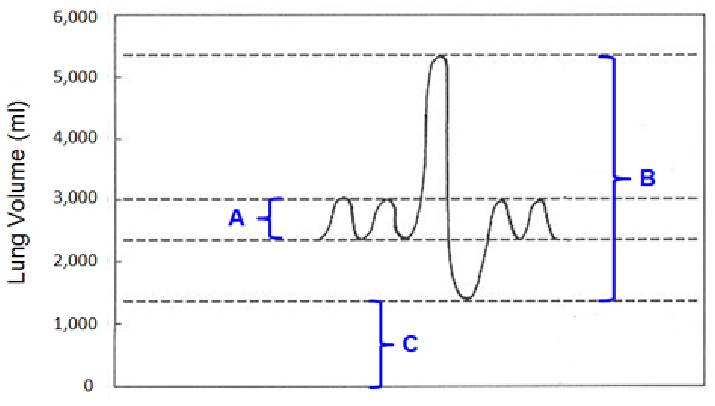It has been suggested that chaperonin overexpression in cells promotes genetic variation and enzyme evolution. This is probably because chaperonins can:
A. alter the accuracy of transcription.
B. alter the accuracy of translation.
C. promote degradation of less stable protein variants.
D. promote folding of less stable protein variants.
E. form aggregates with increased binding capabilities.
D
You might also like to view...
Examine the pedigree in the figure above, where individuals that have the genetic condition being
tested are marked with filled squares or circles. Which of the following inheritance patterns is most likely correct for this condition?
a. autosomal dominant b. X-linked recessive c. X-linked dominant d. cytoplasmic inheritance e. autosomal recessive
In the below graph, if Bracket A represents the tidal volume and Bracket B represents the vital capacity, respectively, of a young man, what does Bracket C represent?

A. air that is not used for gas exchange
B. air with a concentration of oxygen higher than that of air outside the body
C. anatomical dead space
D. air from a previous breath that does not mix with newly-inhaled air of the next breath
E. air that helps keep the alveoli inflated (open) after forced exhalation
Clarify Question
What is the key concept addressed by the question?
What type of thinking is required?
Gather Content
What do you already know about the lungs? What other information is related to the question?
Choose Answer
Given what you now know, what information is most likely to produce the correct answer?
Reflect on Process
Did your problem-solving process lead you to the correct answer? If not, where did the process break down or lead you astray? How can you revise your approach to produce a more desirable result?
The physical characteristics an organism possesses that are used to describe, classify, and categorize the organism by appearance are referred to as its_________.
A) phenotype B) genotype
Which of the examples below are polymorphic traits? Select all that apply.
A. Lactose tolerance and intolerance in humans. B. A population of lilies that contains equal proportions of both blue and white flowering individuals. C. The A, B, and O blood types found in humans. D. Hair loss in malnourished, captive chimpanzees. E. The change from white coat in winter to brown coat in summer in Arctic fox populations.